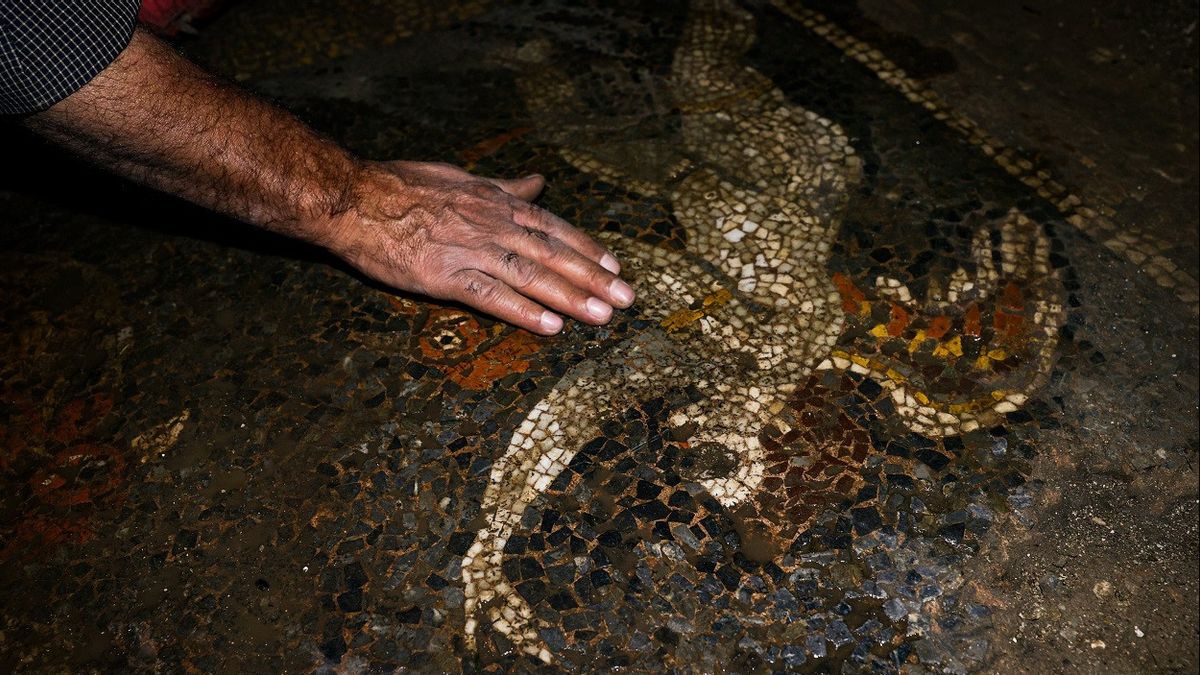JAKARTA - Experts have rescued a 2,000-year-old mosaic dating from the Roman period under protection, in Konak District, Aegean Province of Izmir, Turkey. The ancient mosaic was believed to represent love between gods in Greek mythology.
Izmir museum experts have completed their preliminary work on a mosaic seized from an illegal excavation site, in the garden of a house in Ikiçeşmelik District during an operation by a police team.
Reached via an underground tunnel that stretches for 8 kilometers (5 miles), the mosaics are placed under protection to keep their structure and architectural integrity intact, with respect to the period in which they were made, the materials used, and their original form.
When first examined, it was judged that the figure on the mosaic depicted love between gods in Greek mythology, while the god of love, Eros, was depicted with a rooster in his hand.
It is thought that the rooster represents the guardian of Alectryon, a young warrior assigned by Ares, the god of war, to guard outside his door so that no one will discover his love affair with Aphrodite, the goddess of beauty.

However, Alectryon falls asleep while on duty and Helios, the sun god, discovers Ares and Aphrodite's secret love the next morning. As a result, Ares punishes Alectryon by turning him into a rooster, who never forgets to announce the arrival of the sun in the morning with his crow.
Hünkar Keser, director of the Izmir Archaeological Museum, told Anadolu Agency (AA), excavations for the mosaics were carried out in peristyle courtyards, a Greek architectural style that can be described as rectangular open courtyards surrounded by colonnaded corridors in ancient times.
He explained that when the team found a Roman-era building in the yard where the illegal excavation was carried out, the team immediately took action to protect the building and the mosaics that have a unique history.
"This page is 50 meters (164 feet) from the Smyrna Agora. We are in an area we can call the center of ancient Smyrna," he said, quoting Daily Sabah from AA December 20.
"We can say that there are first examples in the field of civil architecture of the Roman period in this area. Extensive examination of the area has not been carried out. First, it was necessary to nationalize the area and demolish some buildings," he continued.
Keser added that the area is currently under constant police protection, to protect the historical heritage that resides within it.
The English, Chinese, Japanese, Arabic, and French versions are automatically generated by the AI. So there may still be inaccuracies in translating, please always see Indonesian as our main language. (system supported by DigitalSiber.id)












